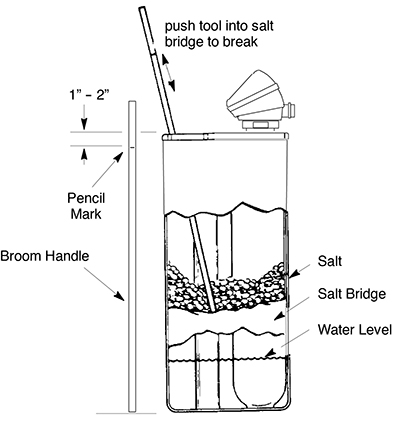Mike Bradford
New Member
I have just moved into a house that has a Lancaster Water Treatment System model 7-FESLES-32
The brine tank is 18 x 33 inches. The tank appeared to have what I think is a salt bridge and clog on the brine well uptake.
I have removed all of the salt sludge and cleaned the brine well uptake.
I hav allowed the brine tank to go through its fill cycle and I am now ready to add back new salt pellets.
question is it appears the water level is about a third of the way up the tabnk.
do I add enough salt pellets to be above the water line or does the salt stay below>?
sorry for the long question. have never had a water softener before and don't want to repeat causing a salt bridge if I can avoid it.
it is currently set to regen every 7 days, as opposed to by gallons (1600).
any help would be much appreciated.
best regards,
Mike
The brine tank is 18 x 33 inches. The tank appeared to have what I think is a salt bridge and clog on the brine well uptake.
I have removed all of the salt sludge and cleaned the brine well uptake.
I hav allowed the brine tank to go through its fill cycle and I am now ready to add back new salt pellets.
question is it appears the water level is about a third of the way up the tabnk.
do I add enough salt pellets to be above the water line or does the salt stay below>?
sorry for the long question. have never had a water softener before and don't want to repeat causing a salt bridge if I can avoid it.
it is currently set to regen every 7 days, as opposed to by gallons (1600).
any help would be much appreciated.
best regards,
Mike

